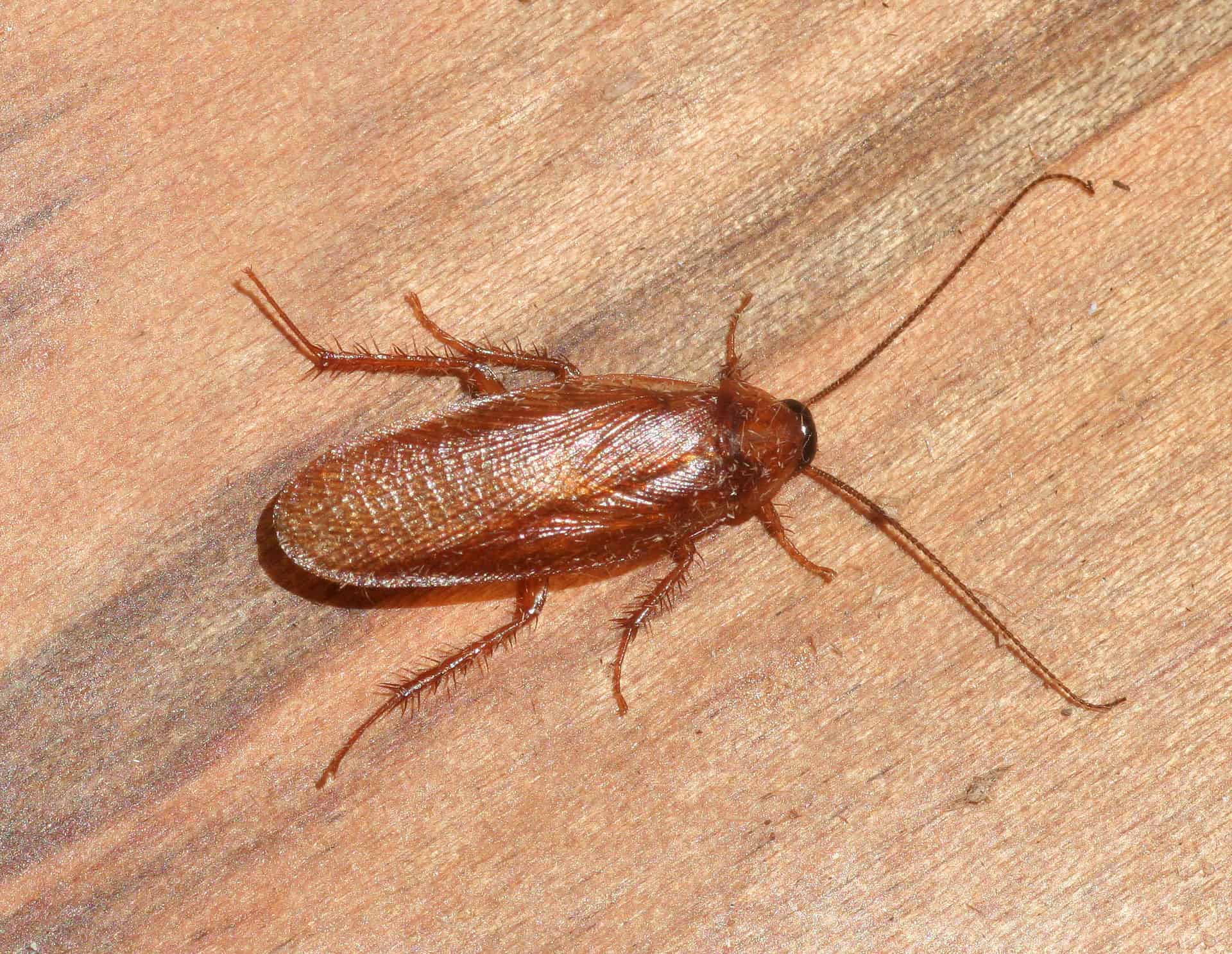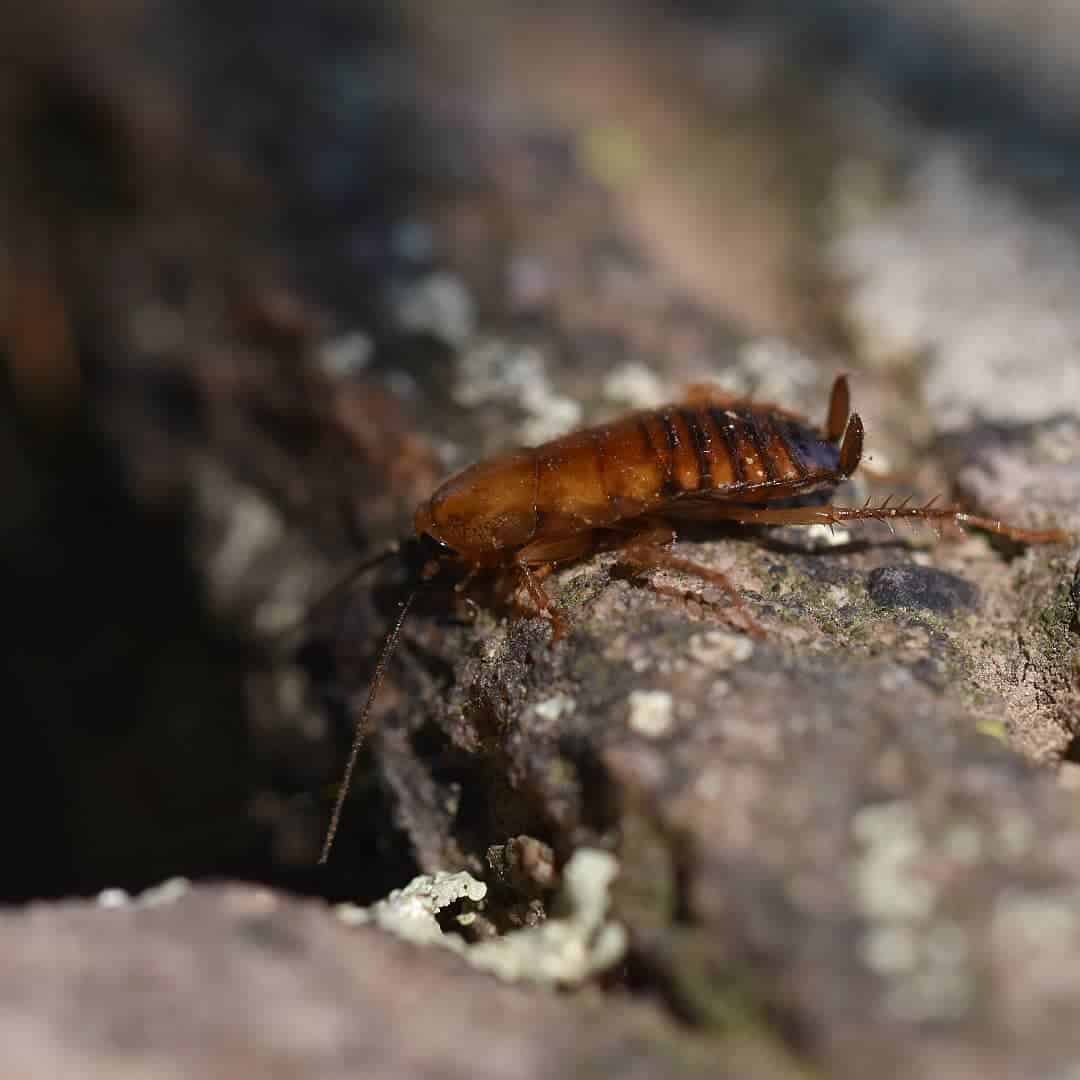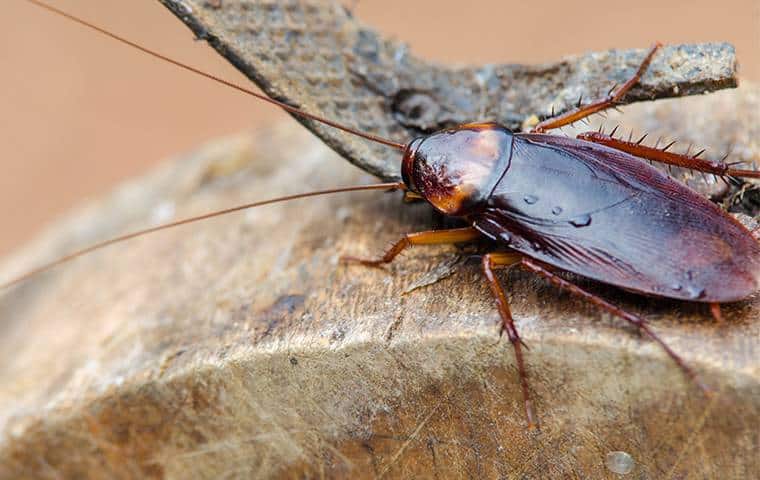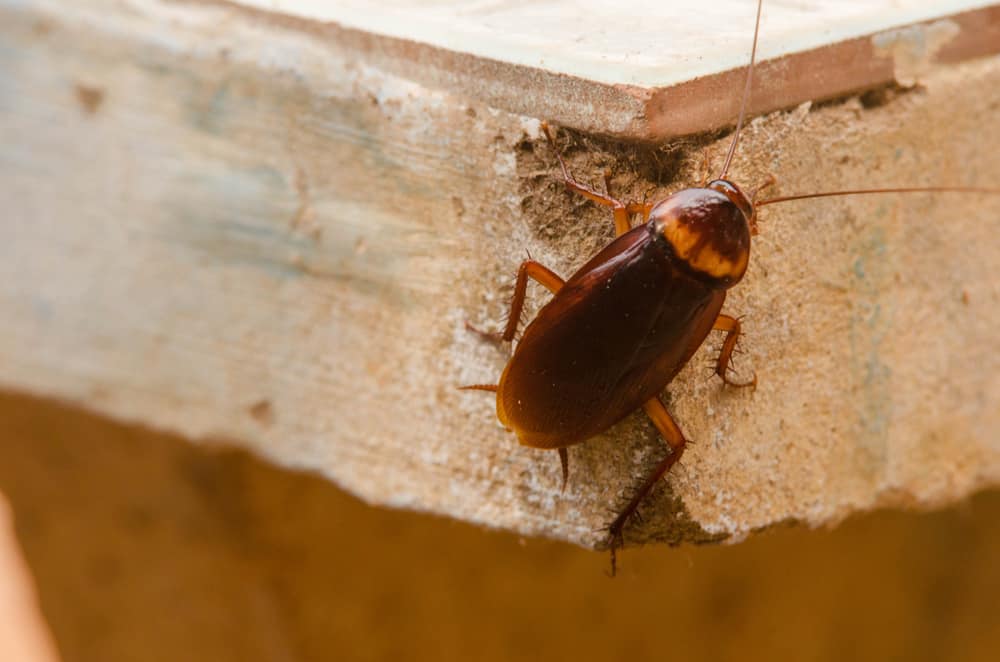Cockroaches are one of the most widely despised insects in the world. Yet, they are also one of the oldest and most widely spread out insects too and today they can be found on every continent and in every climate except in the Arctic and Antarctica.
Cockroaches are an incredibly diverse group of insects too as there are over 4,600 different species in the world with only about 30 of them commonly seen in human habitats. In a way, this can be seen to mean that cockroaches have an undeservedly bad rep – after all, the vast majority of cockroach species don’t have anything to do with us and where we live.
What’s more, there are even cockroach species that do come into contact with human habitats and aren’t seen as pests regardless. A prime example of that is wood roaches. So, what are wood roaches and how are they different from cockroaches? Let’s delve into a detailed wood roach vs cockroach comparison below.
What is a Wood Roach?

Credit: wikipedia
A wood roach is a type of cockroach. More accurately, the name of these insects is Pennsylvania wood roach or Parcoblatta Pennsylvanica in Latin. Despite that name, wood roaches aren’t found just in Pennsylvania but can be seen all across the eastern and northern US.
That said, wood roaches are indeed cockroaches. But, as we said above, that really only makes them one out of 4,600 different cockroach species. So, what makes them special and why are they compared to the few cockroach species people know and hate so much?
Well, there are two main facts behind that:
- Wood roaches look very similar to a lot of common city-spread cockroach species such as the American cockroach and the German cockroach. Wood roaches have the signature oval shape, long antennae, and brown color of most cockroach species though they are easily distinguished from the black Oriental cockroach.
- While wood roaches prefer to live in the untamed woods – hence their name – they can come in contact with people that live in more rural areas, especially if they have wooden structures in their backyard or if they store firewood there for the winter.
When that’s the case, a homeowner can very well expect to encounter wood roaches on their property or even in their home as wood roaches can easily be brought inside by accident with the firewood.
This can be a distressing experience at first, especially if you don’t know what a wood roach is or what it means for your home. Many people’s first instinct is to call for pest control or to just reach for the insecticides themselves the moment they see a little brown roach running around the floor.
That’s an understandable reaction but is often unnecessary as wood roaches just aren’t the same as the American cockroaches or the German cockroaches people hate and often have trouble dealing with. The key reason for that is that the Pennsylvania wood cockroach has no interest in eating or living around human waste and therefore isn’t the same superspreader of disease as other cockroaches.
How to Distinguish Wood Roaches from Cockroaches?
A wood cockroach typically looks very much like the common American cockroach. The two insects have almost identical visual characteristics:
- Both American and wood cockroaches have a brown coloring – typically lighter for males and a darker stripped brown for females.
- Adult males of both species have wings and can glide or sparsely fly when need be. Females of the American cockroach species also have that ability, however, female wood roaches don’t have wings.
- Both types of roaches have more or less the same standard appearance associated with cockroaches – oval-shaped bodies, spikes on the outsides of the legs to help them climb, two antennae that are as long or longer than their bodies, and more.
So, if wood roaches look so similar to the standard American cockroaches, how can we tell them apart? There are three main ways to do so:
- Size – Wood roaches are smaller than American cockroaches. The average adult size for the latter is 1-and-a-half to 2 inches body length whereas adult male wood roaches are only 1 inch long at most (3/4 of an inch for females). So, if you see a brown roach in your home and it’s no larger than an inch, it’s either the nymph of an American cockroach or it’s a wood roach – if it has wings, it’s guaranteed to be a wood roach.
- Living environment – Pennsylvania wood cockroaches are commonly found in and around forest regions as well as in rural properties that often store firewood in their yard or have wooden structures there. American cockroaches, however, are more common in urban areas and especially near areas of abundant human waste – sewers, dumps, and so on.
- Attracted to lights – The third distinguish factor people rarely speak about is the fact that male wood roaches are actually attracted to lights. This is not typical for either female wood roaches or for most other cockroach species. So, if you have lawn lights, for example, or other outdoor lighting fixtures, and you notice roaches gettering near them, those are almost certainly wood roaches.
Taken together, these three things mean that if you live in a rural area and the roaches you’re seeing are tiny, they are almost certainly of the harmless wood roach variety. Whereas, if you live in a big city, then the roaches you may encounter will most likely be of the American cockroach or the German cockroach types.
Of course, there are no guarantees. So, especially if you start seeing these insects more often indoors, you should take a deeper look into the issue. What’s more, even if the roaches you’re dealing with are of the wood roach variety, chances are that you probably don’t want to see them in your house too often so you may still want to take certain measures.
Where exactly do wood roaches live and what do they eat?

Credit:devonpierret
Wood roaches live outdoors and don’t really have an incentive in going indoors. Their preferred habitat is high in moisture and abundant in decaying wood and plant matter. So, if there are water sources, loose tree bark, mulch, stored firewood, a dead tree, or even just a few random wood logs lying around on your property, those will be prime real estate for any wood roach nearby.
Tree barks, in particular, are a fantastic habitat for wood roaches as loose bark offers a great hiding place for the eggs of this insect, as well as a food source since the chief dietary choice of wood roaches is decaying plant matter.
Are Wood Roaches Pests?
It is normal for a lot of people to instinctively view wood roaches as pests. For most of us, “a pest” is any insect or animal that makes us go “Ewww” and that we don’t want near us. Wood roaches meet that description as far as most people are concerned.
At the same time, however, wood roaches aren’t considered pests by any actual definition. That’s because they don’t really have any negative impacts on the environment, on human habitats, and on human health. Because wood roaches only eat wood and plant matter, and avoid eating or even living near waste materials, they don’t spread any unwanted bacteria or disease the way some other cockroach species do.
More than that, the Pennsylvania wood cockroach is actually seen as a beneficial species that should be valued rather than despised. That’s because wood roaches serve the very important purpose of cleaning up the decaying wood and plant matter in forests and fields.
Without these insects, the vast forested and field areas of the northern United States would have been full of slowly decaying plant matter which would have been disastrous for the entire ecosystems of those areas. Wood roaches are considered important decomposers and a pivotal part of any ecosystem they are in.
Can Wood Roaches Infest Your Home?

Credit: empirepestdefense
Encountering a wood roach in your home is possible even if it isn’t all that likely. The two main ways for a wood roach to end up inside your home are these:
1. Come via your firewood
Wood roaches can end up indoors if you’ve accidentally brought them in with your firewood. A lot of homeowners in rural areas store the majority of their firewood outdoors but occasionally bring in logs for a smaller indoor storage so that they don’t need to go outside every time they need a new log.
While this is a sound strategy overall, it does mean that if you bring a piece of firewood from the outside and don’t toss it in the fire immediately, the one (or a few) random wood roaches inside the log will have time to get out of it and start roaming your home.
2. Through cracks and crevices
The second likely entry point is through cracks and crevices on your home’s exterior that wood roaches can use to occasionally sneak in. While this type of insect doesn’t really have an incentive for getting inside a human’s dwelling, wood roaches do roam around from time to time in search of new food sources and suitable egg-laying locations.
Such searches may occasionally lead a wood roach indoors and – distressingly, for both you and the insect – unable to find its way out. At the end of the day, cockroaches aren’t all that intelligent.
Given that these are the two main ways for a wood roach to get inside your home, the two best ways to keep them out become self-evident:
- seal off all cracks and open spaces in the walls, windows, and doors of your house
- don’t bring firewood indoors unless you’re planning to immediately toss it into the fire.
Other good ideas include keeping your outdoor firewood storage further away from your home, lifting it above ground so that it’s less likely to be infested with wood roaches, turning off any lawn lights and other lighting fixtures at night, and putting screens on your windows.
How to Get Rid of Wood Roaches Inside and Outside of Your Home?
Even though wood roaches are harmless and aren’t considered pests, they still aren’t something most homeowners like seeing. If, despite your best efforts to keep such insects out of your home, some have indeed made it inside the house, how should you proceed in dealing with the issue?
The simplest solution is to grab the vacuum cleaner and deal with any stray roaches that way. Because a wood roach would never nest indoors, you don’t really have to worry about a whole population of nymphs and eggs hiding inside your walls.
A potential issue with using just a vacuum cleaner is that it may not kill the roach, however, and the little insect can just get out of the machine later on and keep roaming around.
As far as chemicals are concerned, cockroaches often require different products for different species. That isn’t much of an issue with wood roaches, however. Using any conventional insecticide spray can work on wood roaches too, although spraying pesticides in your home for something as insignificant as a single wood roach is likely overkill.
If you do have a significant wood roach infestation in your yard, however, and you want to deal with that, you’d likely need to use an insecticide outdoors. There are many good options here and most general all-purpose insecticide sprays will work on wood roaches.
In Conclusion – Wood Roach vs Cockroach
Wood roaches and American cockroaches may be difficult to tell apart visually but they are very different in where they live, what they eat, and what they mean for us and our environment. Whereas German and American cockroaches are pests we rightfully hate, wood roaches are a minor annoyance a worst and a very beneficial insect at best.
